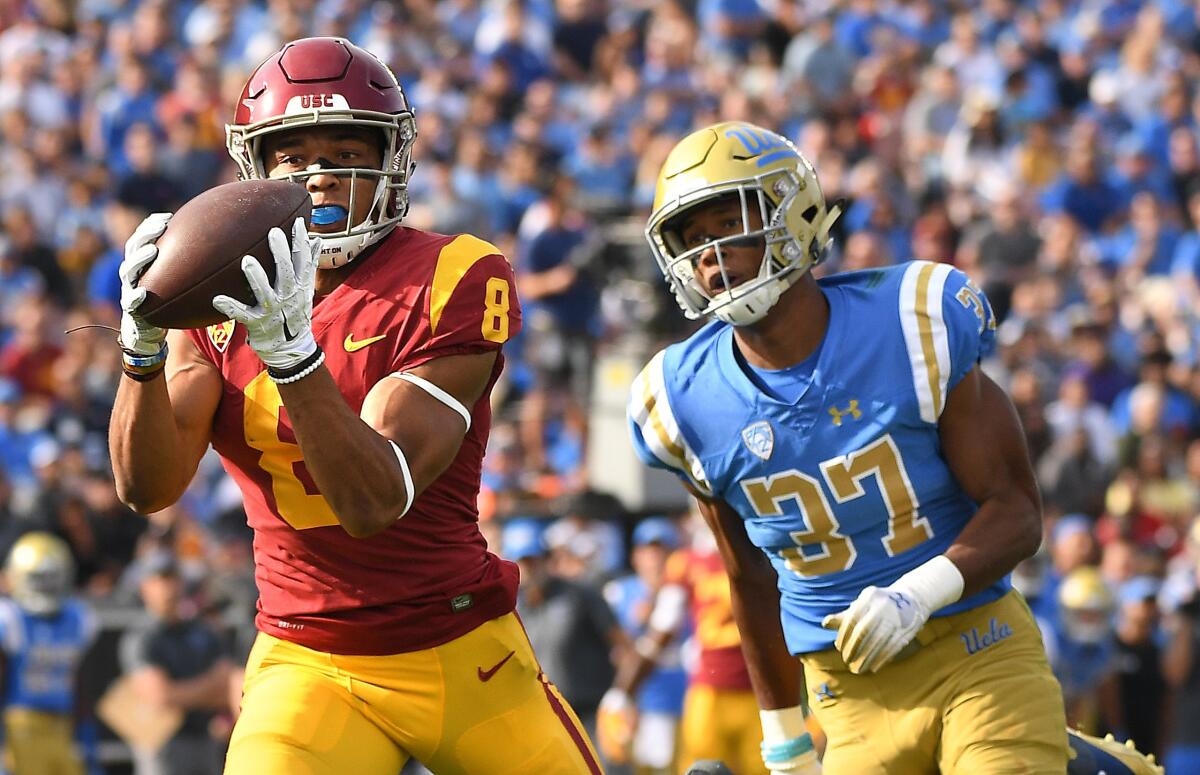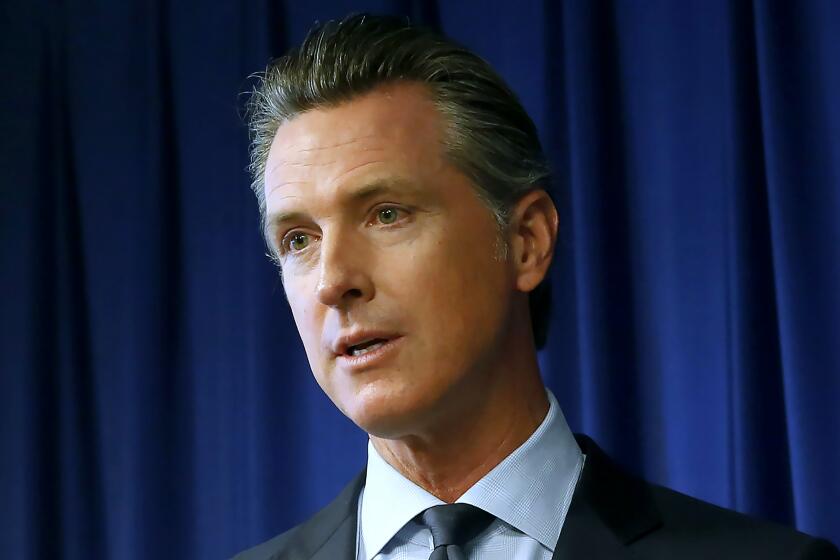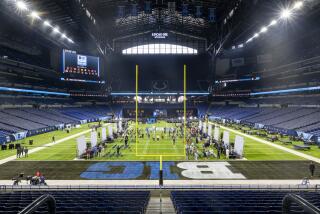NCAA sports are doomed, they say. Yeah, we’ve heard that before

The high-profile legislation provoked a furious response.
One college athletic director warned the law would be the “death knell” for his program.
A conference commissioner called it “absolute bankruptcy.”
The executive director of the NCAA issued a dire warning: “The possible doom of college sports is near.”
More angst over California’s law allowing college athletes to profit from their name, image and likeness?
No. Those apocalyptic predictions came almost five decades ago in response to Title IX, the landmark legislation that mandated equal opportunities for women and men at schools that receive federal funding.
While college sports have since mushroomed into a multibillion-dollar industry, the NCAA and member schools continue to employ doomsday rhetoric when faced with significant change.
“They don’t get in trouble when they deploy this rhetoric, so why not keep trying?” said Victoria Jackson, a sports historian at Arizona State. “These are people who are used to being in charge. They’re used to people bowing down.”
Kendall Ellis enjoyed intense, yet fleeting, fame as an NCAA track champion. A new California law, formerly SB-206, would have also allowed her to cash in.
The NCAA board of governors sent a letter to California Gov. Gavin Newsom last month warning the legislation would upend college sports. The letter called the bill “harmful” and “unconstitutional” and “untenable.” It suggested the 58 NCAA schools in California wouldn’t be eligible to compete in the organization’s events.
Some state legislators cited the perceived threat from the NCAA as part of the motivation to approve the bill.
“I just want to say, ‘NCAA, don’t threaten California. Don’t threaten us,’” Assemblywoman Sydney Kamlager-Dove (D-Los Angeles) said before the Assembly passed the bill 72-0.
NCAA President Mark Emmert, who signed the letter, doubled down during an appearance in Washington last month. He told CBS Sports the legislation posed an “existential threat” to college sports and is a “huge, huge issue … as big a one as we’ve seen in modern times.”
Emmert suggested California legislators should “tone down some of the rhetoric.”
However, ominous talk isn’t unusual when college sports are involved.
Last year, Pac-12 Conference Commissioner Larry Scott warned that a Los Angeles County Superior Court ruling that the NCAA’s show-cause penalty violated state law could threaten the membership of the conference’s four California schools.
Rebecca Blank, the University of Wisconsin chancellor, testified last year in a lawsuit against the NCAA by a former football player that her school might dismantle its athletics juggernaut if the organization removed its cap on compensating athletes. (The school quickly issued a press release saying there weren’t any plans to disband the athletic department.)
Big Ten Commissioner Jim Delany suggested in 2013 that the conference could drop to Division III — a level of competition void of athletic scholarships — if college athletes were allowed to share in television revenue.
During another trial against the NCAA in 2006, UCLA athletic director Dan Guerrero wrote in a declaration that “it would be difficult” for the school to provide additional athletic aid for football and men’s basketball players to cover the full cost of attendance.
None of the talk panned out.
The Pac-12’s California schools remain NCAA members, Wisconsin’s athletics program rolls along, the Big Ten didn’t drop to a lower level and every Pac-12 school, including UCLA, covers the full cost of attendance for scholarship athletes.
California became the first state to require major financial reforms in college athletics on Monday after Gov. Gavin Newsom signed into law a measure that allows players to receive endorsement deals.
“The NCAA has had some success throwing out fear and hyperbole to stop the bleeding and frame public perception,” said David Ridpath, a former college sports administrator who is an associate professor of sports administration at Ohio University. “It may cause a ruckus, but eventually they lose.”
The same thing happened with Title IX.
Walter Byers, then executive director of the NCAA, described it as “the most injurious piece of legislation on college athletics to come out of Washington yet.”
John McKay, the legendary USC football coach who was also athletic director, claimed the law “means the end of our athletic program” and “we don’t have the funds to cover such a thing.”
Tom Hansen, then the NCAA’s assistant executive director and later the longtime Pac-10 commissioner, joined the outrage. He called the law “reverse sex discrimination” and believed it shouldn’t apply to college sports.
“It’s very, very probably going to destroy [men’s sports programs],” Hansen told the Washington Post in 1975. “The members are kind of stunned and they’re asking, ‘Is it really true?’”
Three years later, the Boston Globe described Hansen as “angry.”
“The attitude among many coaches is that they spent years building nationally respected programs and now 10 or 12 girls want to get in the gym,” he told the newspaper. “Most of them can’t even shoot or dribble.”
The NCAA sued to keep the government from applying Title IX to college sports — some have suggested the organization could do the same over the California name, image and likeness law — but a federal judge dismissed the lawsuit in 1978.
The rhetoric evaporated. The NCAA survived. So did the schools whose athletic directors warned their programs could be shuttered. There are roughly half a million athletes competing in NCAA sports today; more than half are women.
Andy Schwarz, an economist in San Francisco who co-sponsored the name, image and likeness bill, pointed to past predictions of doom that went nowhere.
“None have been correct,” he said. “I see no reason we should expect the track record to change.”
More to Read
Go beyond the scoreboard
Get the latest on L.A.'s teams in the daily Sports Report newsletter.
You may occasionally receive promotional content from the Los Angeles Times.












